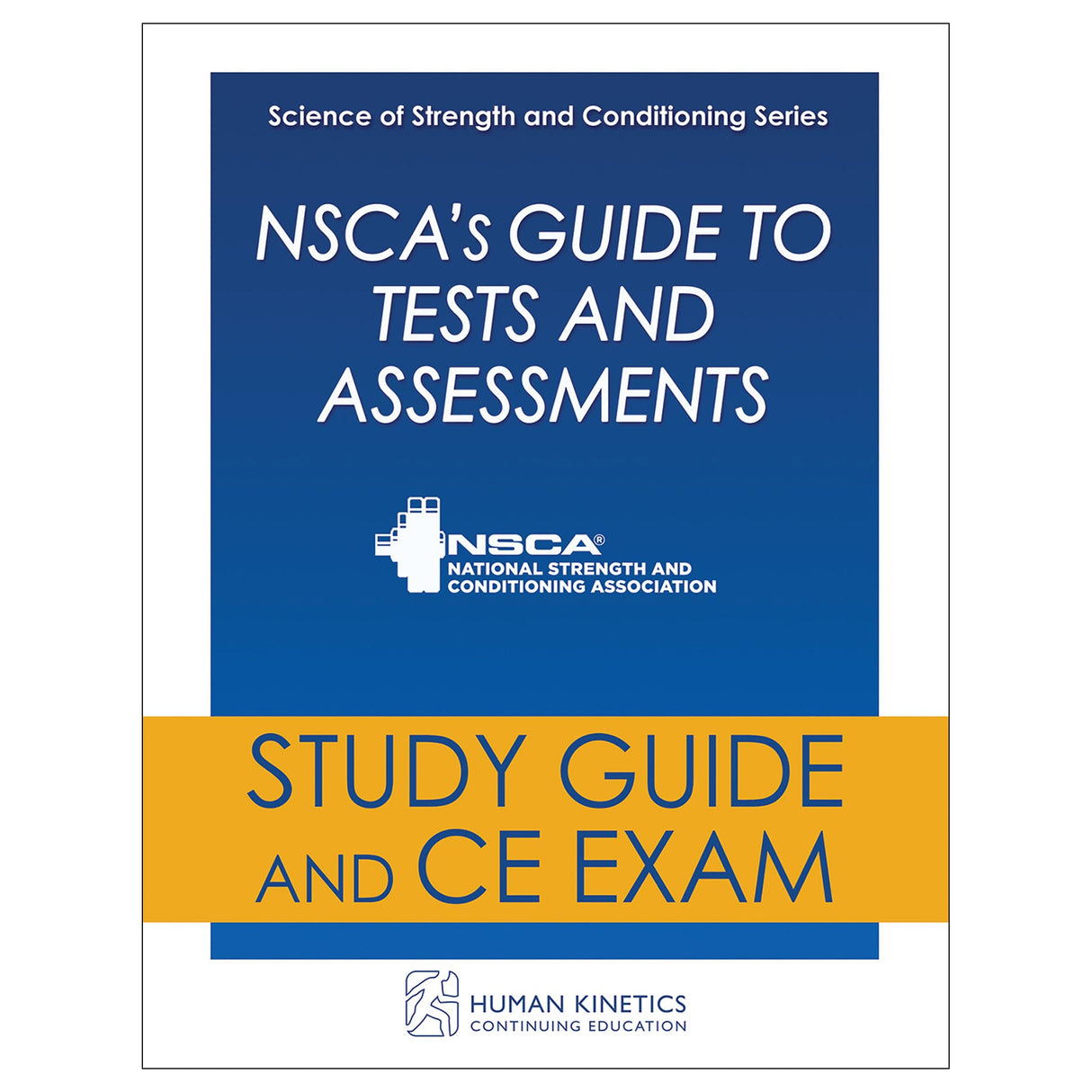NSCA's Guide to Tests and Assessments Online CE Course Without Book
Author: Human Kinetics
$110.95 CAD
Human Kinetics strongly recommends that you complete your exam within the calendar year of your date of purchase to ensure approved credits do not expire for your organization.
This package includes the following:
- Online study guide
- Online continuing education exam
Once you pass the exam, you can print a certificate for continuing education credits.
Learning Objectives
- Perform a needs analysis and understand how to apply the information.
- Structure testing and assessments around the needs of the population being evaluated.
- Understand various statistical procedures.
- Measure body composition using both direct and indirect methods.
- Identify the metabolic demands of a sport.
- Understand all aspects of the use of a needs analysis.
- Determine heart rate using either indirect or direct methods.
- Understand how blood pressure and heart rate affect training intensity.
- Use heart rate measurements to monitor training progress and dictate programming.
- Determine physical activity energy expenditure using various methods.
- Understand how resting metabolic rate, thermal effect of food, and physical activity contribute to energy expenditure.
- Measure metabolic rate through direct or indirect calorimetry.
- Use monitoring devices to measure training intensity.
- Identify the proper submaximal or maximal testing protocols for assessing aerobic power.
- Correctly administer aerobic power tests and know how to use the collected data to modify training programs when necessary.
- Determine lactate threshold and use it for individualizing training intensity.
- Understand how to determine an athlete’s maximal work rate to predict exercise performance.
- Evaluate aerobic endurance exercise capacity with lactate threshold testing.
- Understand how muscular strength is expressed.
- Measure values of maximal muscular strength directly.
- Predict maximal muscular strength values from multiple repetitions with submaximal loads.
- Safely administer muscular endurance tests to volitional failure.
- Recognize when it is appropriate to use muscular endurance tests that use relative and absolute loads.
- Understand the relationship between force, velocity, and power.
- Identify sports performance needs through assessment of power.
- Select appropriate power tests based on the population and intent.
- Differentiate between tests of speed and agility.
- Identify proper tests to measure and assess mobility.
- Recognize limitations in mobility and how they affect overall function.
- Understand the concepts of center of gravity, center of mass, and base of support.
- Identify and administer appropriate balance and stability tests.





